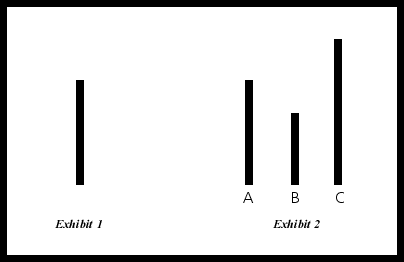Quick Write: When is it right and when is it wrong to obey authority figures in your life such as parents, teachers and/or police officers? Put your thoughts into a well-organized paragraph.
Important Background Information
What was the Holocaust?
The Holocaust was the systematic, government-sponsored murder of approximately six million Jews by Adolf Hitler and the Nazis in Germany.
What were the Nuremberg Trials?
The Nuremberg trials were a series of trials held between 1945 and 1949 in which the Allied Army prosecuted various people associated with Nazi Germany for the crimes they committed in the Holocaust.
The Nuremberg trials were a series of trials held between 1945 and 1949 in which the Allied Army prosecuted various people associated with Nazi Germany for the crimes they committed in the Holocaust.
Who was Adolf Eichmann?
Eichmann was a Nazi Lieutenant and one of the major organizers of the Holocaust. He escaped to Argentina but was caught and taken to Israel, where he was put to trial and found guilty of 15 criminal charges. He was found guilty and was hanged in 1962.
Eichmann was a Nazi Lieutenant and one of the major organizers of the Holocaust. He escaped to Argentina but was caught and taken to Israel, where he was put to trial and found guilty of 15 criminal charges. He was found guilty and was hanged in 1962.
Read the following article, using the four columns template to take notes. The question: Why do people obey authority figures?
Obedience to Authority: An Experiment by Stanley Milgram

Obedience: Person obeys a direct order from an authority figure to perform an action; assume that person would not act this way without an order
What is the Milgram Experiment
(Adapted from http://www.simplypsychology.org/milgram.html)
by Saul McLeod, 2007
(Adapted from http://www.simplypsychology.org/milgram.html)
by Saul McLeod, 2007
One of the most famous studies of obedience in psychology was carried out by Stanley Milgram (1963). Stanley Milgram, a psychologist at Yale University, conducted an experiment focusing on the conflict between obedience to authority and personal conscience.
He examined justifications for acts of genocide offered by those accused at the World War II, Nuremberg War Criminal trials. Their defense often was based on “obedience” – that they were just following orders of their superiors.
He examined justifications for acts of genocide offered by those accused at the World War II, Nuremberg War Criminal trials. Their defense often was based on “obedience” – that they were just following orders of their superiors.
The experiments began in July 1961, a year after the trial of Adolf Eichmann in Jerusalem. Milgram devised the experiment to answer the question “Could it be that Eichmann and his million accomplices in the Holocaust were just following orders? Could we call them all accomplices?” (Milgram, 1974).
Milgram (1963) wanted to investigate whether Germans were particularly obedient to authority figures as this was a common explanation for the Nazi killings in World War II.
Milgram selected participants for his experiment by advertising for male participants to take part in a study of learning at Yale University. The procedure was that the participant was paired with another person and they drew lots to find out who would be the ‘learner’ and who would be the ‘teacher’. The draw was fixed so that the participant was always the teacher, and the learner was one of Milgram’s confederates (pretending to be a real participant).

The learner (a confederate called Mr. Wallace) was taken into a room and had electrodes attached to his arms, and the teacher and researcher went into a room next door that contained an electric shock generator and a row of switches marked from 15 volts (Slight Shock) to 375 volts (Danger: Severe Shock) to 450 volts (XXX).
Aim: Milgram (1963) was interested in researching how far people would go in obeying an instruction if it involved harming another person. Stanley Milgram was interested in how easily ordinary people could be influenced into committing atrocities for example, Germans in WWII.
Procedure: Volunteers were recruited for a lab experiment investigating “learning”. Participants were 40 males, aged between 20 and 50, whose jobs ranged from unskilled to professional. At the beginning of the experiment they were introduced to another participant, who was actually a confederate of the experimenter (Milgram). They drew straws to determine their roles – leaner or teacher – although this was fixed and the confederate always ended up being the learner. There was also an “experimenter” dressed in a white lab coat, played by an actor (not Milgram).
The “learner” (Mr. Wallace) was strapped to a chair in another room with electrodes. After he has learned a list of word pairs given him to learn, the “teacher” tests him by naming a word and asking the learner to recall its partner/pair from a list of four possible choices.

The “learner” being strapped to the chair

The electric shock generator the “teacher” would use

The setup: teacher and student are in different rooms
The teacher is told to administer an electric shock every time the learner makes a mistake, increasing the level of shock each time. There were 30 switches on the shock generator marked from 15 volts (slight shock) to 450 (danger – severe shock).
The learner gave mainly wrong answers (on purpose) and for each of these the teacher gave him an electric shock. When the teacher refused to administer a shock and turned to the experimenter for guidance, he was given the standard instruction /order (consisting of 4 prods):
Prod 1: please continue.
Prod 2: the experiment requires you to continue.
Prod 3: It is absolutely essential that you continue.
Prod 4: you have no other choice but to continue.
Prod 2: the experiment requires you to continue.
Prod 3: It is absolutely essential that you continue.
Prod 4: you have no other choice but to continue.
Victim Feedback: The vocal response of the victim was taped and
coordinated to a particular voltage level on the shock generator. The victim indicated no discomfort until the 75 volt shock was administered, at which time the victim gives a grunt. From 150 volts on, he insisted that he be let out. After 330 volts he was not heard from at all. At 300 volts the victim shouted in desperation that he would no longer provide answers to the memory test. After 330 volts, the victim was not heard from again. He was completely silent, even after the shocks were given. At this point the teacher would usually turn to the experimenter for guidance. The experimenter would instruct the teacher to treat the absence of a response as a wrong answer, and to shock the learner according to the usual schedule. He advised the teacher to allow 5 to 10 seconds before considering no response as a wrong answer, and to increase the shock level one step each time the learner failed to respond correctly.
coordinated to a particular voltage level on the shock generator. The victim indicated no discomfort until the 75 volt shock was administered, at which time the victim gives a grunt. From 150 volts on, he insisted that he be let out. After 330 volts he was not heard from at all. At 300 volts the victim shouted in desperation that he would no longer provide answers to the memory test. After 330 volts, the victim was not heard from again. He was completely silent, even after the shocks were given. At this point the teacher would usually turn to the experimenter for guidance. The experimenter would instruct the teacher to treat the absence of a response as a wrong answer, and to shock the learner according to the usual schedule. He advised the teacher to allow 5 to 10 seconds before considering no response as a wrong answer, and to increase the shock level one step each time the learner failed to respond correctly.
Results: 65% (two-thirds) of participants (i.e. teachers) continued to the highest level of 450 volts. All the participants continued to 300 volts.
Milgram did more than one experiment – he carried out 18 variations of his study. All he did was alter the situation (IV) to see how this affected obedience (DV).
Conclusion: Ordinary people are likely to follow orders given by an authority figure, even to the extent of killing an innocent human being. Obedience to authority is ingrained in us all from the way we are brought up. Obey parents, teachers, anyone in authority etc.
Conclusion: Ordinary people are likely to follow orders given by an authority figure, even to the extent of killing an innocent human being. Obedience to authority is ingrained in us all from the way we are brought up. Obey parents, teachers, anyone in authority etc.
Today's Writing Workshop: At the end of class, please choose one of the questions on the note-taking sheet and answer it in a well-organized paragraph on your blog. In order to get full credit, please post all of your work on your blog, including the quick write, the note-taking template, and your paragraph, too.
***Don't forget to complete and turn in your "Six Elements of Engagement Daily Self-Tracker" before leaving class.
***What's Due
***Don't forget to complete and turn in your "Six Elements of Engagement Daily Self-Tracker" before leaving class.
***What's Due
- Selfie poster
- Letter to me
- First post
- Essential Questions worksheet
- Identity post
- Asch Experiment












